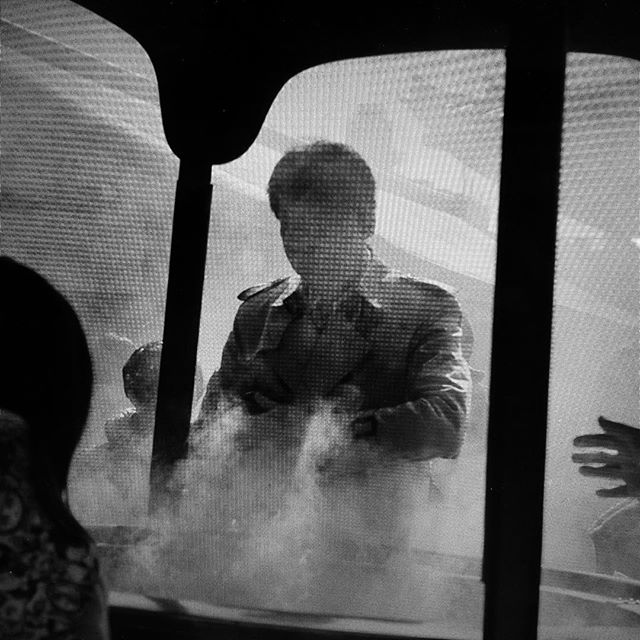Virtual reality has been a persistent idea underlying our conversation – an image field that completely covers our sight, and all sound and movement, functioning as a totalizing force over our perceptions. As with your images of blue skies, or our color fields, lensless eyes and cameras. The current version of VR we’re offered by the market, it seems to me, asks us to surrender our awareness, to allow our senses to be occupied by the apparatus. It’s a delicate moment, or should be, because we are required to trust both the device and the producers.
Most recent VR experiences I’ve seen try to exploit the functions of the technology to expand control over the user. I have yet to see a hack of the technology, to expose some critical distance between giving up sensory control to the apparatus, and how we think about what’s happening to us while we’re enveloped. Instead, the critical thought, if there is one, comes sequentially, with reflection after the experience.
This gap we can term the conceptual gaze. It is, in short, the difference between what we are looking at, and what we are seeing. There is something either naive or manipulative in the push to make sensation the primary measure of a filmic experience, in aspiring to make looking and seeing the same thing. The end game is a sensory deprivation tank, or a cell for solitary confinement. And indeed, someone has already made a solitary confinement VR – which is either the height of manipulation, or perhaps, if done properly, the conceptual gap that we seek.
I spent last week on Lake Michigan, and some time lying on my back on a dock in a lake, the water below me casting an underglow onto the sky above. For a moment, or a while, I felt as if I were floating unmoored in a field of blue. Later that night, in the same position, I searched the sky for traces of the Perseid meteor shower, for the light that reportedly comes from 1079, 1479, 1862, those burning bits of rock, our evidence of time.
/// #image_by_image is an ongoing conversation between photographers Ivan Sigal and Anton Kusters.@ivansigal and @antonkusters on Instagram ///
